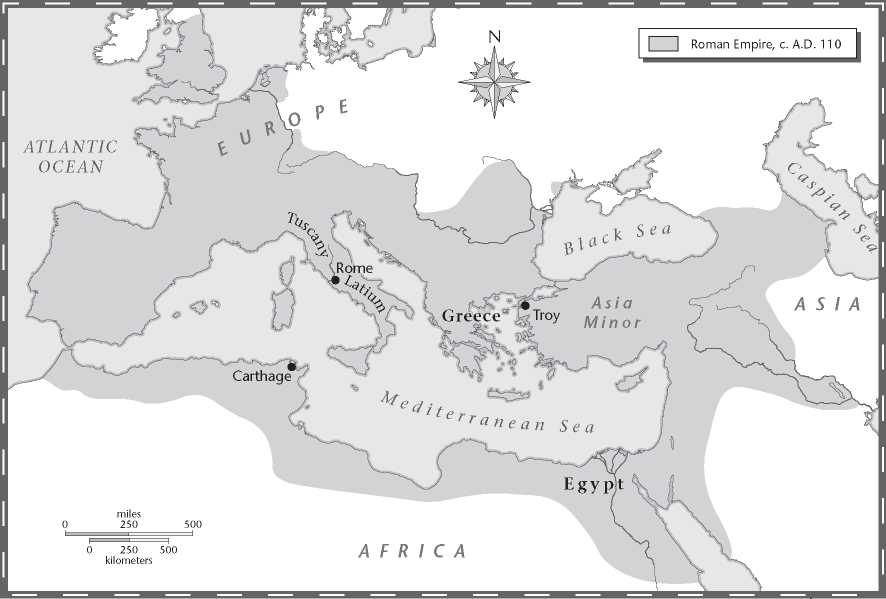From A. D. 96 to 180, a series of able emperors ruled Rome, but the quality of emperors in the next halfcentury would be uneven, and several were assassinated. Over the coming years, that method of replacing Roman emperors would become common. Between 235 and 285, Rome had twenty emperors, many of them promoted to their positions by the army. Few died a natural death.
During the third century, an increasing tax burden, a slave-based economy, and other deep-seated economic problems created an ever-widening gap between rich and poor, until there was no one in between. The few Romans who were fabulously wealthy gave themselves up to lives of pleasure, while the many living in poverty faced a future of unrelieved misery. Neither group was having children, the rich because they could not be bothered, the poor because they could not afford them. Both groups practiced widespread abortion and infanticide, or the murder of children. Soon the Roman population began to decrease, and

A map of the Roman Empire at its height, c. a. d. 110. Illustration by XNR Productions. Reproduced by permission of the Gale Croup.
The Italian countryside was filled with empty houses.
The empire stopped growing along with the population. For centuries, Rome had survived on constant warfare, which brought in slaves and captured treasures. No one thought about expanding the economy by learning better ways to cultivate crops or by creating more goods to sell; therefore once there were no more nations to attack, there would be no more wealth. Up to the A. D. 100s, the system of growth by conquest had worked fairly well; then Rome came to the limits of its power.
All around it, the empire faced natural or manmade boundaries: deserts in North Africa and the Middle East, the military force of the Persians and others on its southeastern borders, the Atlantic Ocean to the west, and the North Sea to the northwest. Worst of all, along its northern and northeastern frontiers, formed by the Rhine (RYN) and Danube (DAN-yoob) Rivers respectively, were dozens and dozens of tribal "barbarians." The mission of Rome's armies turned from conquest to mere survival, as they tried to hold on to lands they had won centuries before. But Romans themselves had lost their will to fight; therefore as time went on, the ranks of their legions were increasingly filled with foreigners—primarily barbarians.




 World History
World History









